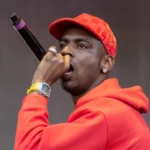Dominican Republic is a Caribbean nation with a rich and vibrant music culture. Rap music is particularly popular, with a large and dedicated fan base. Dominican Republic’s rap music has evolved over the years, and continues to be a major part of the country’s music landscape.
This article will explore the various genres of rap music that are popular in the Dominican Republic, as well as the artists and producers that have helped shape the scene. Additionally, the article will look at the current state of rap music in the Dominican Republic, and discuss some of the challenges that the genre faces.
Exploring the Origins of Dominican Republic Rap Music
The Dominican Republic has a rich history of rap music that dates back to the late 1970s. Rap music in the Dominican Republic has its roots in the traditional Latin American genre of plena, which originated in Puerto Rico. Plena is a style of music characterized by an upbeat tempo and improvisational call-and-response lyrics.
In the Dominican Republic, rap music emerged as a way to express the struggles and triumphs of life in the Caribbean nation. In the early 1980s, a group of Dominican rappers known as
Grupo Kool began to gain international recognition for their use of rap as a form of political expression. Grupo Kool’s songs often addressed the issues of poverty, inequality, and political corruption that were prevalent in the Dominican Republic during this time.
Since the emergence of Grupo Kool, rap music in the Dominican Republic has continued to evolve and gain popularity. The genre has been heavily influenced by other Latin American music styles such as reggaeton, merengue, and bachata, creating a unique sound that is distinctly Dominican. Dominican rap has also seen the emergence of a number of prominent artists, such as
Jojoy Toca Boca, El Alfa, and El Chombo, who have become popular throughout the Caribbean and the world.
Today, rap music is one of the most popular genres in the Dominican Republic. It is a vibrant and ever-evolving art form that continues to reflect the struggles and triumphs of life in the Caribbean nation.
What Influence Does Dominican Hip Hop Have on the Rap Music Genres in the Dominican Republic?
The Dominican hip hop scene has made a significant impact on the rap music genres in the Dominican Republic. With its unique blend of traditional Dominican rhythms and socially conscious lyrics, it has reshaped the local music landscape and has influenced the development of rap and related genres across the country.
Examining the Lyrics of Dominican Republic’s Rap Music
Rap music originating from the Dominican Republic has become increasingly popular in recent years, and it has been embraced as a form of national expression. The lyrics of Dominican rap songs often focus on themes of survival, resilience, and identity in the face of social and economic challenges.
The lyrics of rap music in the Dominican Republic often deal with the harsh realities of living in poverty. Many of the songs highlight topics such as police brutality, gang violence, and human trafficking. The music also explores themes of resilience and how people are able to survive and persevere despite the difficult circumstances they face.
Another major theme in Dominican rap lyrics is identity. Songs often talk about the various ways that Dominican people identify themselves, such as their culture, religion, and national pride. The music also celebrates the Dominican Republic’s unique history and culture, and it serves as a platform for artists to express their individual perspectives on various topics.
Finally, many of the rap songs in the Dominican Republic focus on the idea of hope. The lyrics often talk about the importance of staying positive and finding ways to make the best of difficult situations. This theme resonates with many listeners, as it serves as a source of motivation and inspiration.
Overall, Dominican rap music is a powerful form of expression that conveys a variety of messages and themes. The lyrics explore a range of topics that are relevant to the Dominican Republic, and they provide listeners with a unique insight into the culture and experiences of the people living there.
How Dominican Republic Rap Music is Evolving with the Times
Rap music in the Dominican Republic is in a state of evolution, and its sound is reflective of the country’s changing culture. As Dominican Republic rap music continues to develop, it is taking on new elements, incorporating influences from other types of music and reflecting the changes in the Dominican Republic’s society and culture.
One of the most notable changes in Dominican Republic rap music is the incorporation of traditional Latin American flavors. Rap artists have taken influences from traditional genres such as bachata and merengue and blended them with their own unique sound. This has resulted in a unique mixture of traditional and modern rap music, which is often referred to as “urbana” music.
The lyrics in rap music have also taken on a more conscious tone. Artists are using their music to send messages of social and political empowerment to their listeners. They are rapping about issues such as politics, education, and poverty, and are encouraging their fans to stand up and fight for what they believe in. This conscious approach to rap is a far cry from the more traditional rap music of the past, which often focused on topics such as money, drugs, and sex.
Technology has also played a role in the evolution of Dominican Republic rap music. As the internet has become increasingly accessible, Dominican Republic rap artists have been able to reach a much wider audience than ever before. This has allowed them to showcase their music to a global audience, and has also allowed them to collaborate with other artists from around the world.
As Dominican Republic rap music continues to evolve, it is becoming increasingly popular and influential. It is reflective of the changing times, and is reflective of the nation’s culture. As rap music continues to grow in popularity, it is sure to become an even more important part of Dominican Republic culture and identity.



